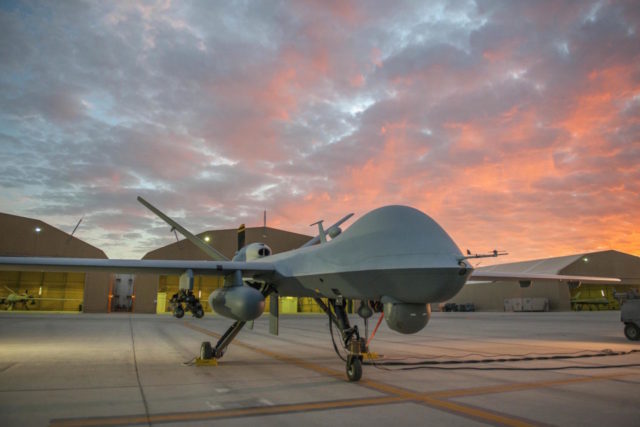
Terrorism Monitor: The Drone Special Issue
Publication: Terrorism Monitor Volume: 15 Issue: 17
By:

The U.S. drone program has proved to be an efficient tool for targeting terrorist bases and eliminating militant leaders within the ranks of groups like the Taliban and al-Qaeda. After years of relative success, however, the use of drones, or unmanned aerial vehicles (UAVs), is entering a new phase. Other states are bringing their own drone programs online, and the proliferation of civilian drone technology has opened the door to the use of UAVs by non-state actors. This special issue of Terrorism Monitor focuses on the concerns created by such developments.
Criticisms of the U.S. drone program, which was stepped up under President Barack Obama, have concentrated on the number of civilian casualties caused by drone strikes. The numbers have ranged markedly, but there have without a doubt been tragic incidents. Drone technology does, however, offer a far greater degree of precision than aerial bombing. It is also relatively cost-effective and poses no risk to U.S. forces. As such, for all the controversy and debate, drones appear set to remain a key plank of counterterrorism strategy.
In this special edition of Terrorism Monitor, Pavel Felgenhauer examines how Russia’s drone program, reliant for the time being on Israeli technology, has expanded in recent years and how Moscow is using the Syrian conflict as a testing ground for its UAVs. Iran too has increasingly deployed drones for both civilian and military purposes. Ariane Tabatab looks at Tehran’s use of UAVs for its own counterterrorism efforts and details the Iranian drone program, developed despite the imposition of economic sanctions.
For all the effectiveness of drones in counterterrorism terms, killing from afar cannot win hearts and minds, and the resentment and anger stoked among local populations by drone strikes is real. Michael Horton examines how the U.S. deployment of drones in Yemen has helped to shape al-Qaeda in the Arabian Peninsula (AQAP), aiding its recruitment efforts and forcing the group to adapt its organizational structure.
Meanwhile, as drone technology becomes ever more commercialized and accessible, it is being adapted by non-state actors with some success. Islamic State (IS) has used drones to film its own attacks to post online alongside its bloody beheading videos as part of its propaganda efforts, and it has even managed to carry out some deadly strikes. Examining this issue, Elizabeth Santoro and Avery Plaw discuss how non-state actors are experimenting with drones to pose a potentially lethal threat.




